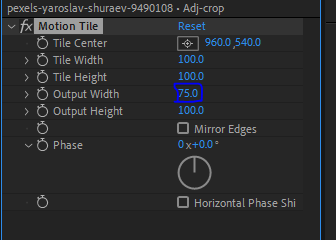After Effects Workshop
- jesskesson
- Sep 26, 2021
- 3 min read
Since the board game project relies on After Effects for editing, we were given a quick workshop on how to use After Effects to age footage.
I started by quickly downloading a 1920 x 1080 video from Pexels by Yaroslav Shuraev to use.
Video by Yaroslav Shuraev from Pexels:
I then opened up a new composition based on the video, which means the project size will match that of the video. I also made sure the size and format of the video were correct in the composition settings menu.
I then started following a tutorial on how to age the footage. The first thing I did was right click in the composition panel and create a new adjustment layer, which I named Adj-01. This will be where all the effects are applied, and since this layer has been placed above the footage, the footage will be affected by it. This is also how Photoshop layers work, which is why this software is easy for me to put down and then pick up again a few years later.
With the adjustment layer selected, I applied a Lumetri Colour effect, which will allow me to give the footage a faded and blurry look. I did this by upping the Faded Film setting to 50, and lowering the Sharpen setting to -50.
To add more contrast to the footage, I also adjusted the RGB curve to really enhance the darks and lights. This will make the footage feel far older.

Something that was a minor problem for me was that I'd accidently selected to view the adjustment layer instead of the footage I was editing. To view what I'd done to the footage so far, I had to select the video from the top bar.
Here is a comparison of the original footage next to the footage with the adjustment layer applied. There are still more effects to apply to the adjustment layer, with the next being one of the most recognisable features of old videos.
Chromatic aberration is when the three channels used in film (red, blue and green) are slightly misaligned and cause a strange distortion of colour in footage. This is what I'll be applying next, using a Channel Blur.
I added three Channel Blurs, and set the red, blue and green's bluriness stats up to 30 in each one. I also made sure to select that the blue would be happening horizontally. However, I found that blurring all three of them didn't give me any effect, so I turned off the green blur.
The next thing I added was a Wave Warp, which will give me the banding in the footage. I set the wave type to Square, then set the height to 10 and the pinning to all edges. I messed up the wave speed the first time I did this, so I had to go back and change it from 2.0 to 0.2.
I then added a layer of Noise in, and set the amount to 10, which gives the footage a grainy look.
I then added a Mosaic layer and then adjusted it to match with the rest of the effects.
Finally, I added an Unshap Mask, which makes the footage look compressed.
After I'd done that, I created a second adjustment layer above the first, and added a Wave Warp to it. This Wave Warp has been set to Noise, with a height of 10 and a width of 20, and the pinning set to All Edges once again.
Since this effect isn't wanted throughout the entire duration of the footage, I went down into the composition timeline and scrubbed through the footage, pressing Ctrl + Shift + D to cut the adjustment layer into different length pieces. I then went back through these new layers and deleted every other one, which will now mean that the Wave Warp will only show some of the time in the video.
As a final part, I added one last adjustment layer, and added a Motion Tile to it, and changed the Output Width to 75. This will mean (if the footage was originally 1920 x 1080) that the visible footage is now the same proportion as old films from the era that we're trying to mimic in this project.
As a bonus, I downloaded a video of screen static to overlay on top of the footage.

I brought it into After Effects and put it on top of the rest of the footage before setting the layer type to Screen, which allows the static to be projected onto the footage underneath.
Here's the exported footage. With the screen static layered above it, the footage is banded with lines and noise much more realistically. This process will be essential to creating a convincing trailer from the 70s - 80s.










































Comments